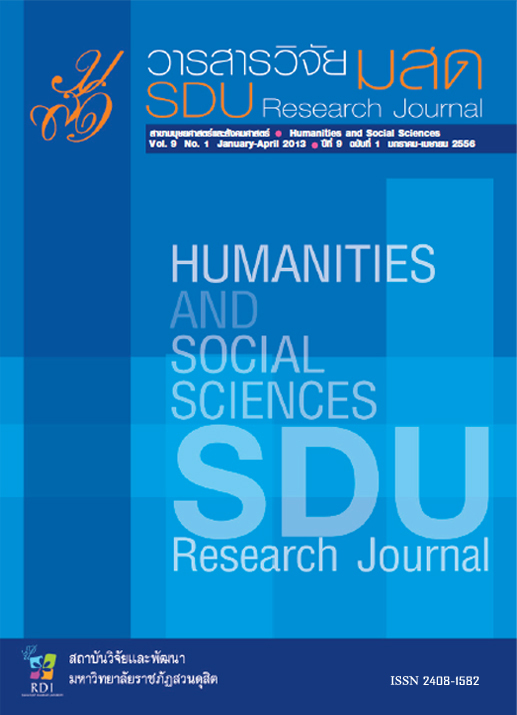ความสามารถด้านมิติสัมพันธ์ของเด็กปฐมวัยที่ได้รับการจัดประสบการณ์การเล่น ของเล่นรูปทรงสัมพันธ์
Keywords:
ความสามารถด้านมิติสัมพันธ์, การจัดประสบการณ์การเล่นของเล่นรูปทรงสัมพันธ์Abstract
บทคัดย่อ
การวิจัยครั้งนี้มีจุดมุ่มหมายเพื่อศึกษาระดับความสามารถ และเปรียบเทียบความสามารถด้านมิติสัมพันธ์ของเด็กปฐมวัยก่อน และหลังได้รับประสบการณ์การเล่นของเล่นรูปทรงสัมพันธ์ การวิจัยนี้ใช้กลุ่มตัวอย่าง คือเด็กปฐมวัยชาย – หญิง อายุ 3-4 ปี ที่กำลังศึกษาอยู่ในชั้นอนุบาลปีที่ 1 ภาคเรียนที่ 2 ปี การศึกษา 2553 โรงเรียนราทร กรุงเทพมหานคร สังกัดสำนักงานคณะกรรมการการศึกษาเอกชนผู้วิจัยใช้การสุ่มอย่างง่าย (simple random sampllng) โดยทำการจับฉลากเป็นกลุ่มทดลองจำนวน 15 คน ใช้เวลาทำการทดลองสัปดาห์ละ 3 วัน วันละ 30 นาที รวมระยะเวลาในการทดลอง 8 สัปดาห์ โดยการจัดประสบการณ์การเล่นของเล่นรูปทรงสัมพันธ์ตามแผนที่ผู้วิจัยจัดทำขึ้น และใช้แบบทดสอบวัดความสามารถด้านมิติสัมพันธ์ ซึ่งมีค่าดัชนีความสอดคล้องของแบบทดสอบ (IOC) อยู่ระหว่าง 0.67 ถึง 1.00 และมีค่าความเชื่อมั่นเท่ากับ .83 และ แบบแผนการวิจัยเป็นการวิจัยเชิงทดลองแบบ One-Group Pretest – Posttest Design วิเคราะห์ข้อมูลโดยใช้ t-test for Dependent Samples
Abstract
The purpose of this research was to study the spatial abilities of young children
before and after experiencing playing shape-related toys. The subjects of this study were
15 children aged 3-4 who were selected by using a simple random sampling. They were
studying kindergarten one, in the first semester of the 2010 academic year at Narathon
School, Bangkok which was under the jurisdiction of the Office of Private Education
Commission. The experiment was conducted for 30 minutes a day, three days a week, for
eight consecutive weeks. The research instrument was a test for spatial ability of young
children with the index of Item Objective Congruence (IOC) between 0.67-1.00 and the
reliability of .83. The design of this research was one-group pretest-posttest design. Data was
analyzed by using dependent samples t-test.
The research findings were as follows:
After experiencing playing shape-related toys, the young childrenûs spatial ability
highly increased. The difference of the young childrenûs spatial ability before and after
receiving the experience was significant at a statistic level (p=.05).
Keywords: spatial ability, children experiencing playing shape-related toys








